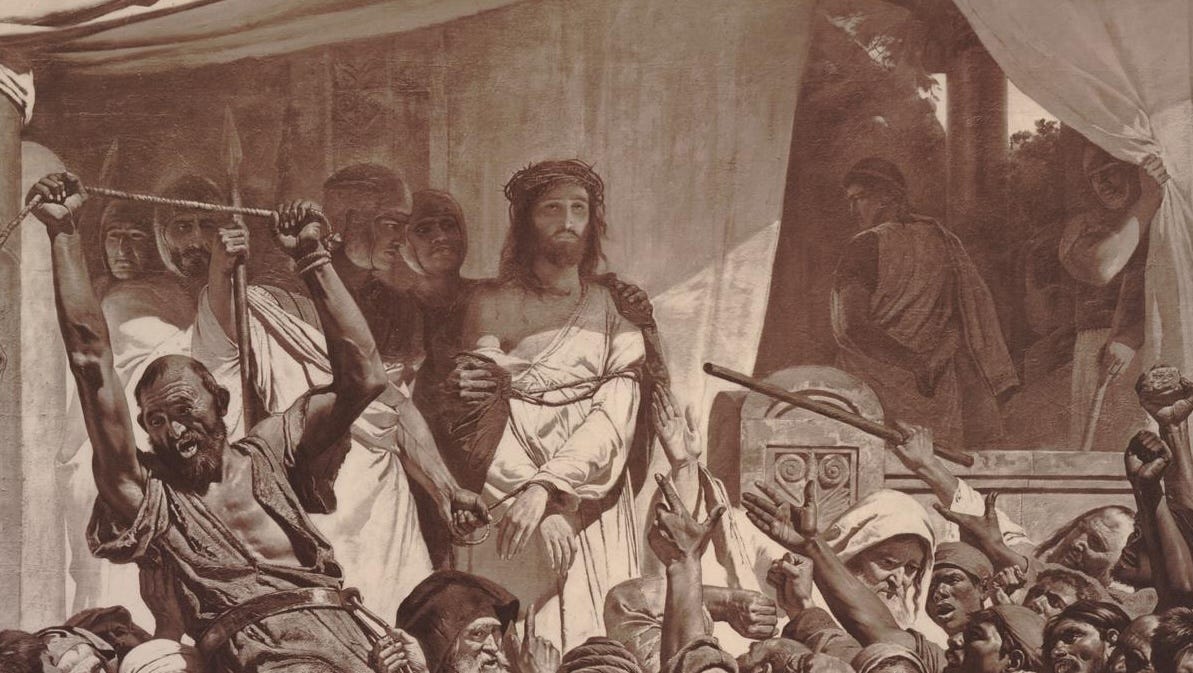Christ’s Silence in his Passion—and in his Church
After four and a half weeks of Lent, the Church enters the silence of Passiontide. What does the veiling of her images teach us about Christ during his Passion?

Entering the Holy of Holies
“He began to grow sorrowful and to be sad. Then he saith to them: My soul is sorrowful even unto death. Stay you here and watch with me.”1 (Matthew 26.37-8)
After four and a half weeks of fasting and penance, the Roman Church now enters Passiontide—the final phase of Lent, culminating in Holy Week.
Until now, the liturgy has drawn our attention not to the sufferings of Christ, but to his divine majesty.
The Church has shown us the God-Man victorious over his enemies, transfigured in glory, and working miracles—all so that we might know who this God-Man really is. She is showing us who it is that chooses to suffer in the garden, at the pillar, amongst mocking soldiers, on the way to Golgotha, and on his holy cross. She wants to show us that whatever sacrifices are demanded of us for his sake are more than worth it.
It is only after this period of preparation that the Church allows us to enter into the Holy of Holies of Passiontide. She veils the images, she prepares us for his silence, and she bids us follow him into Gethsemane—where he begins to suffer for our salvation.
Our Lord begins to be sorrowful
When Our Lord went to the Garden of Gethsemane, the gospels say that he “began” to be sorrowful. St Mark adds that “he began to fear”: before this, there is no trace of fear in him whatsoever. Even at the Last Supper, his disciples are more afraid and sad than he is.
This is because, as the Gospels indicate, he had not yet “begun”—in an active sense. John Henry Cardinal Newman wrote the following:
“He was always Himself. His mind was its own centre, and was never in the slightest degree thrown off its heavenly and most perfect balance. What He suffered, He suffered because He put Himself under suffering, and that deliberately and calmly. […]
“He said, ‘Now I will begin to suffer,’ and He did begin.
“His composure is but the proof how entirely He governed His own mind. He drew back, at the proper moment, the bolts and fastenings, and opened the gates, and the floods fell right upon His soul in all their fulness. […]
“You see how deliberately He acts; He comes to a certain spot; and then, giving the word of command, and withdrawing the support of the God-head from His soul, distress, terror, and dejection at once rush in upon it. Thus He walks forth into a mental agony with as definite an action as if it were some bodily torture, the fire or the wheel.”2
This agony became so severe that he began to sweat blood.
By the time that Judas arrives, Our Lord appears to have mastered this sorrow—although as we shall see in the next part, this sorrow continues. Nonetheless, he spends almost all of his Passion in a composed and dignified silence.
What does this silence reveal to us today—especially in the midst of the current crisis in the Church?
This is a WM+ article.
The WM Review is free for readers. This is because we believe these ideas must reach as many people as possible.
However, we also provide WM+ articles—additional material for those who choose to support this work financially. This helps us continue producing serious Catholic research, while ensuring that the main body of material remains accessible for all.
If you want to ensure that this flow of material continues, join WM+ today.
(Clergy and seminarians can contact us for free membership.)

